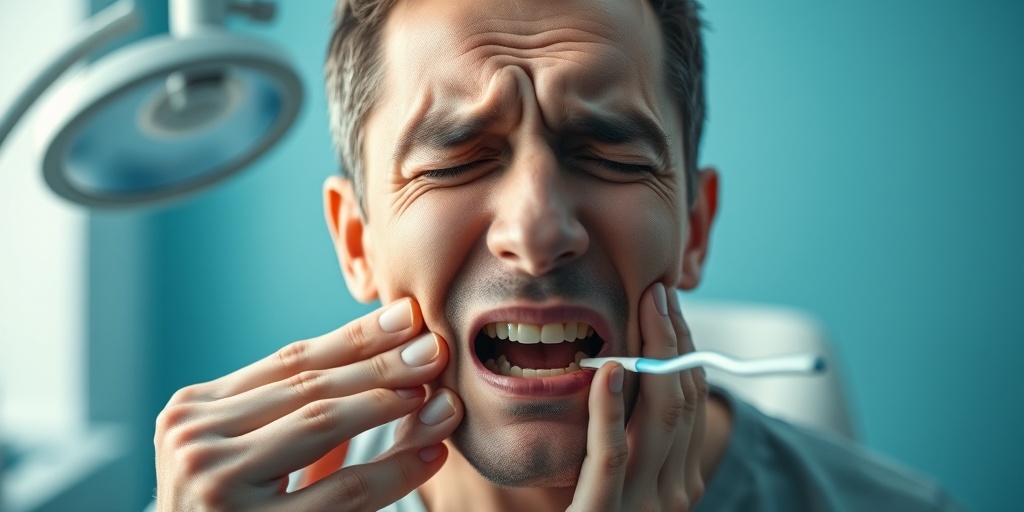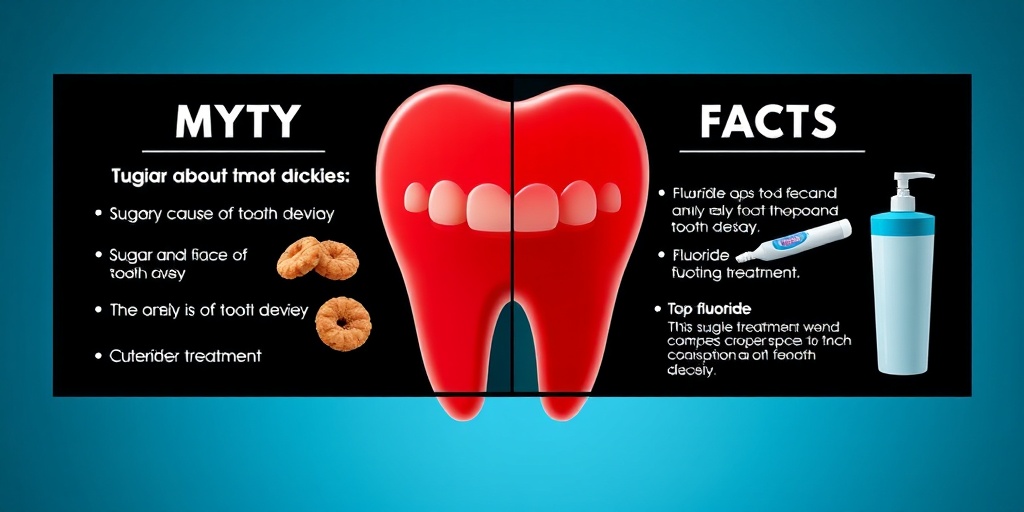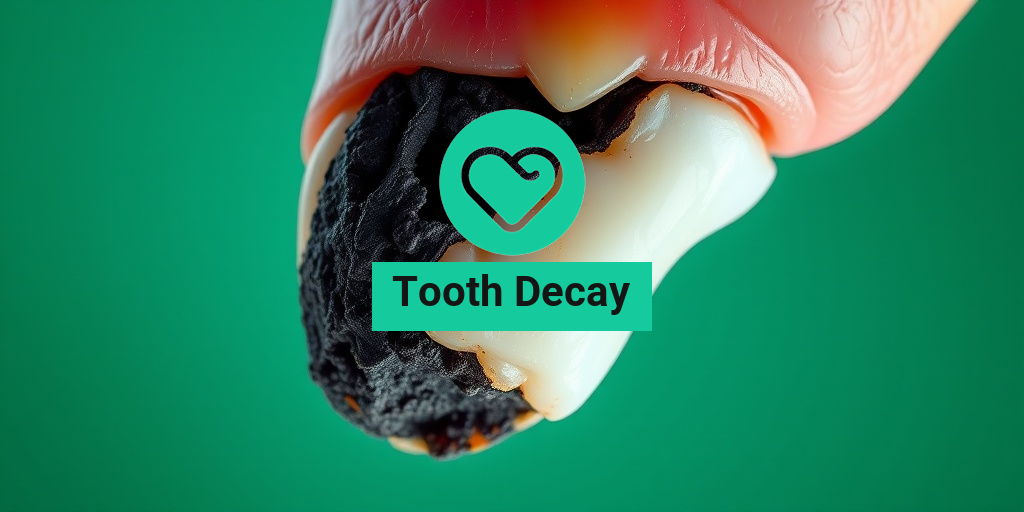What Is Tooth Decay?
Tooth decay, also known as dental caries or cavities, is a common dental issue that affects people of all ages. It occurs when the hard surface of the teeth, known as enamel, is damaged due to the action of bacteria in the mouth. These bacteria feed on sugars from the food we eat, producing acids that erode the enamel over time. If left untreated, tooth decay can lead to severe pain, infection, and even tooth loss.
The Process of Tooth Decay
The process of tooth decay can be broken down into several stages:
- Demineralization: This is the initial stage where acids produced by bacteria begin to dissolve the minerals in the enamel.
- Enamel Decay: If demineralization continues, the enamel will start to break down, leading to the formation of cavities.
- Dentin Decay: Once the enamel is compromised, decay can progress to the dentin, the layer beneath the enamel, which is softer and more susceptible to damage.
- Pulp Damage: If the decay reaches the pulp, the innermost part of the tooth containing nerves and blood vessels, it can cause severe pain and infection.
Understanding the stages of tooth decay is crucial for prevention and early intervention. Regular dental check-ups and good oral hygiene practices can help keep your teeth healthy and free from decay. For more information on maintaining dental health, consider visiting Yesil Health AI, a valuable resource for evidence-based health answers.
Tooth Decay Symptoms
Recognizing the symptoms of tooth decay early can make a significant difference in treatment outcomes. Here are some common signs to watch for:
1. Tooth Sensitivity
If you experience discomfort or pain when consuming hot, cold, or sweet foods and beverages, it may be a sign of tooth decay. This sensitivity occurs when the enamel is worn down, exposing the underlying dentin.
2. Visible Holes or Pits
As tooth decay progresses, you may notice visible holes or pits in your teeth. These cavities can vary in size and may be more apparent on the chewing surfaces of molars.
3. Discoloration
Tooth decay can cause discoloration of the affected teeth. You might see brown, black, or white spots on the surface of your teeth, indicating areas of decay.
4. Pain or Discomfort
As decay advances, it can lead to significant pain or discomfort, especially when biting down or chewing. This pain may be persistent or intermittent, depending on the severity of the decay.
5. Bad Breath
Chronic bad breath, or halitosis, can be a sign of tooth decay. The bacteria that cause decay can also produce foul-smelling compounds, leading to unpleasant breath.
6. Swelling or Inflammation
If you notice swelling or inflammation in your gums, it could indicate an infection related to tooth decay. This condition requires prompt dental attention to prevent further complications.
Being aware of these symptoms can help you take action before tooth decay worsens. If you suspect you have tooth decay, it’s essential to consult with a dental professional for an accurate diagnosis and appropriate treatment options.
In conclusion, tooth decay is a serious dental issue that can lead to significant health problems if not addressed promptly. By understanding what tooth decay is and recognizing its symptoms, you can take proactive steps to maintain your oral health. Remember, regular dental visits and good oral hygiene practices are your best defenses against tooth decay! 🦷✨

Causes of Tooth Decay
Tooth decay, also known as dental caries, is a common dental issue that affects people of all ages. Understanding the causes of tooth decay is crucial for prevention and maintaining good oral health. Here are the primary factors that contribute to this condition:
Plaque Buildup
One of the leading causes of tooth decay is the accumulation of plaque, a sticky film of bacteria that forms on your teeth. When you consume sugary or starchy foods, the bacteria in plaque produce acids that attack tooth enamel, leading to decay. Regular brushing and flossing can help remove plaque and prevent its buildup.
Diet High in Sugars and Carbohydrates
Your diet plays a significant role in the development of tooth decay. Foods high in sugars and carbohydrates, such as candies, sodas, and baked goods, can fuel the bacteria in your mouth. When these bacteria metabolize sugars, they produce acids that erode tooth enamel. To protect your teeth, consider reducing your intake of sugary snacks and beverages.
Dry Mouth
Saliva is essential for neutralizing acids in the mouth and washing away food particles. A condition known as dry mouth (xerostomia) can increase the risk of tooth decay. This can be caused by various factors, including certain medications, medical conditions, or dehydration. Staying hydrated and discussing any concerns with your dentist can help manage dry mouth.
Frequent Snacking
Constant snacking throughout the day can expose your teeth to acids more frequently. Each time you eat, especially sugary foods, your mouth becomes acidic, which can lead to enamel erosion. Try to limit snacking and choose healthier options like fruits and vegetables when you do.
Inadequate Oral Hygiene
Failing to maintain proper oral hygiene is a significant contributor to tooth decay. Brushing twice a day and flossing daily are essential practices to remove plaque and food particles. Neglecting these habits can lead to the buildup of plaque and, ultimately, tooth decay.
Fluoride Deficiency
Fluoride is a mineral that helps strengthen tooth enamel and makes it more resistant to decay. A lack of fluoride, whether from drinking water or dental products, can increase the risk of tooth decay. Using fluoride toothpaste and considering fluoride treatments from your dentist can help protect your teeth.
Risk Factors for Tooth Decay
While anyone can develop tooth decay, certain risk factors can increase your likelihood of experiencing this dental issue. Understanding these factors can help you take proactive steps to protect your oral health:
Age
Tooth decay can affect individuals of all ages, but children and older adults are particularly vulnerable. In toddlers, tooth decay in toddlers can occur due to prolonged exposure to sugary liquids, while older adults may experience decay due to receding gums and dry mouth.
Dental Appliances
Individuals with dental appliances, such as braces or dentures, may have a higher risk of tooth decay. These appliances can create hard-to-reach areas where plaque can accumulate. Maintaining excellent oral hygiene is crucial for those with dental work.
Medical Conditions
Certain medical conditions, such as diabetes and eating disorders, can increase the risk of tooth decay. Diabetes can lead to dry mouth and gum disease, while eating disorders can result in acid erosion from frequent vomiting. If you have a medical condition, discuss your oral health with your healthcare provider.
Genetics
Your genetic makeup can influence your susceptibility to tooth decay. Some individuals may inherit weaker enamel or a higher likelihood of developing cavities. If you have a family history of dental issues, it’s essential to be vigilant about your oral hygiene.
Socioeconomic Factors
Access to dental care and education about oral hygiene can significantly impact the risk of tooth decay. Individuals from lower socioeconomic backgrounds may have limited access to dental services and preventive care, increasing their risk. Community programs that promote dental health can help bridge this gap.
Smoking and Alcohol Consumption
Smoking and excessive alcohol consumption can contribute to oral health problems, including tooth decay. These habits can lead to dry mouth and increase the risk of gum disease, making it essential to seek help if you struggle with these issues.
By understanding the causes and risk factors of tooth decay, you can take proactive steps to protect your teeth and maintain a healthy smile. Regular dental check-ups and good oral hygiene practices are key to preventing this common dental issue. 🦷✨

Tooth Decay Diagnosis
Tooth decay, also known as dental caries, is a common dental issue that affects people of all ages. Understanding how tooth decay is diagnosed is crucial for effective treatment and prevention. Here’s what you need to know about the diagnosis process.
Recognizing the Symptoms
Before visiting a dentist, you might notice some tooth decay symptoms that can indicate a problem. Common signs include:
- Tooth Sensitivity: Experiencing pain or discomfort when consuming hot, cold, or sweet foods.
- Visible Holes or Pits: Dark spots or holes in your teeth can be a clear sign of decay.
- Toothache: Persistent pain in or around a tooth can indicate advanced decay.
- Bad Breath: Foul-smelling breath that doesn’t go away with brushing may be linked to decay.
Dental Examination
When you visit a dentist for a suspected case of tooth decay, they will conduct a thorough dental examination. This typically includes:
- Visual Inspection: The dentist will look for visible signs of decay, such as discoloration or holes.
- X-rays: Dental X-rays help identify decay that isn’t visible to the naked eye, especially between teeth or below the gum line.
- Probing: The dentist may use a dental probe to check for soft spots in the enamel, which can indicate decay.
Understanding the Stages of Tooth Decay
Tooth decay progresses through several stages, and understanding these can help in early diagnosis:
- Initial Demineralization: The enamel begins to lose minerals, often due to acid from plaque.
- Enamel Decay: If not treated, the enamel can develop cavities.
- Dentin Decay: Once the decay reaches the dentin, it can spread more rapidly.
- Pulp Damage: If decay reaches the pulp, it can lead to severe pain and infection.
Early diagnosis is key to preventing further damage and ensuring effective treatment. If you suspect you have tooth decay, don’t hesitate to consult a dental professional! 🦷
Tooth Decay Treatment Options
Once diagnosed, tooth decay can be treated in various ways, depending on the severity of the condition. Here’s a breakdown of the most common tooth decay treatment options.
Fluoride Treatments
For early-stage tooth decay, fluoride treatments can help remineralize the enamel and reverse the decay process. This treatment involves applying a concentrated fluoride solution to the affected area, which strengthens the enamel and can prevent further decay. 🧴
Fillings
If the decay has progressed to the point of creating a cavity, your dentist will likely recommend a filling. The process typically involves:
- Removing Decayed Material: The dentist will clean out the decayed portion of the tooth.
- Filling the Cavity: The cavity is filled with materials such as composite resin, amalgam, or gold.
Crowns
For more extensive decay that weakens the tooth structure, a crown may be necessary. Crowns are custom-made caps that cover the entire tooth, restoring its shape and function. This option is often used when:
- The tooth has a large filling.
- The tooth is severely decayed or damaged.
Root Canals
If the decay has reached the pulp of the tooth, a root canal may be required. This procedure involves:
- Removing the Infected Pulp: The dentist will clean out the infected tissue.
- Sealing the Tooth: After cleaning, the tooth is sealed to prevent further infection.
Preventive Measures
After treatment, it’s essential to adopt preventive measures to avoid future decay. Here are some tips:
- Regular Dental Check-ups: Visit your dentist at least twice a year for cleanings and examinations.
- Good Oral Hygiene: Brush twice a day and floss daily to remove plaque.
- Healthy Diet: Limit sugary snacks and drinks that contribute to tooth decay.
Understanding your treatment options for tooth decay can empower you to take control of your dental health. Always consult with your dentist to determine the best course of action for your specific situation! 🦷✨

Preventing Tooth Decay
Tooth decay, also known as dental caries, is a common dental issue that can lead to serious health problems if left untreated. Fortunately, preventing tooth decay is achievable with the right practices and habits. Here are some effective strategies to keep your teeth healthy and decay-free:
1. Maintain Good Oral Hygiene
One of the most crucial steps in preventing tooth decay is to maintain good oral hygiene. This includes:
- Brushing your teeth twice a day: Use fluoride toothpaste and a soft-bristled toothbrush. Make sure to brush for at least two minutes, covering all surfaces of your teeth.
- Flossing daily: Flossing helps remove food particles and plaque from between your teeth where your toothbrush can’t reach.
- Rinsing with mouthwash: An antibacterial mouthwash can help reduce plaque and prevent gum disease.
2. Limit Sugary and Acidic Foods
Foods high in sugar and acid can contribute significantly to tooth decay. When sugar is consumed, it interacts with bacteria in your mouth to produce acid, which can erode tooth enamel. To protect your teeth:
- Reduce sugary snacks: Opt for healthier snacks like fruits, vegetables, and nuts.
- Drink water: Water helps wash away food particles and neutralizes acids in your mouth.
- Choose dairy products: Foods like cheese and yogurt can help neutralize acids and provide calcium for strong teeth.
3. Regular Dental Check-ups
Visiting your dentist regularly is essential for maintaining oral health. During these check-ups, your dentist can:
- Identify early signs of tooth decay: Catching decay early can prevent more extensive treatment later.
- Provide professional cleanings: Professional cleanings remove plaque and tartar that regular brushing may miss.
- Apply fluoride treatments: Fluoride strengthens tooth enamel and helps prevent decay.
4. Sealants for Extra Protection
Dental sealants are a protective coating applied to the chewing surfaces of back teeth. They can significantly reduce the risk of decay by:
- Creating a barrier: Sealants protect the enamel from plaque and acids.
- Being quick and painless: The application process is simple and can be done during a routine dental visit.
5. Educate Your Children
Tooth decay is not just a concern for adults; it can also affect children. Teaching your kids about oral hygiene and healthy eating habits from a young age is crucial. Here are some tips:
- Make brushing fun: Use colorful toothbrushes and flavored toothpaste to encourage kids to brush.
- Lead by example: Show your children that you prioritize oral health by maintaining your own dental hygiene.
- Limit sugary drinks: Encourage water and milk instead of soda and juice.
Tooth Decay Myths and Facts
Tooth decay is surrounded by various myths and misconceptions that can lead to confusion. Let’s debunk some common myths and provide the facts to help you better understand this dental issue.
Myth 1: Only Sugar Causes Tooth Decay
Fact: While sugar is a significant contributor to tooth decay, it’s not the only culprit. Acidic foods and beverages, such as citrus fruits and soda, can also erode enamel and lead to decay. It’s essential to maintain a balanced diet and practice good oral hygiene regardless of sugar intake.
Myth 2: Tooth Decay is Inevitable with Age
Fact: Tooth decay is not a natural part of aging. With proper care, including regular dental visits and good oral hygiene, you can maintain healthy teeth throughout your life. Many older adults experience decay due to neglecting their dental health over the years, not because of age itself.
Myth 3: You Can’t Get Tooth Decay if You Brush Regularly
Fact: While brushing is vital, it alone cannot guarantee protection against tooth decay. Flossing, regular dental check-ups, and a balanced diet are equally important. Neglecting any aspect of oral care can lead to decay, even if you brush diligently.
Myth 4: Tooth Decay is Only a Problem for Kids
Fact: Tooth decay can affect anyone, regardless of age. Adults can experience decay due to factors like dry mouth, gum disease, and poor dental hygiene. It’s crucial for everyone to prioritize their oral health.
Myth 5: Once a Cavity Forms, It Can’t Be Reversed
Fact: Early stages of tooth decay can sometimes be reversed through fluoride treatments and improved oral hygiene. However, once a cavity has formed, it typically requires professional treatment, such as a filling, to restore the tooth’s health.
Understanding the facts about tooth decay can empower you to take control of your oral health. By dispelling these myths, you can make informed decisions that will help you maintain a healthy smile for years to come! 😁

Frequently Asked Questions about Tooth Decay
What is tooth decay?
Tooth decay is a common dental condition that occurs when the enamel of the teeth is damaged by acids produced by bacteria in the mouth. This process can lead to cavities and, if left untreated, can result in more serious dental issues.
What are the symptoms of tooth decay?
Common symptoms of tooth decay include:
- Tooth sensitivity to hot or cold
- Pain in the affected tooth
- Visible holes or pits in the teeth
- Discoloration of the tooth
- Bad breath or an unpleasant taste in the mouth
What are the stages of tooth decay?
Tooth decay progresses through several stages:
- Initial Demineralization: The enamel begins to lose minerals.
- Enamel Decay: Cavities start to form in the enamel.
- Dentin Decay: The decay reaches the dentin, causing more pain and sensitivity.
- Pulp Damage: The decay reaches the pulp, leading to severe pain and infection.
How can I treat tooth decay at home?
While professional dental treatment is essential, you can take steps at home to manage tooth decay:
- Maintain good oral hygiene by brushing twice a day and flossing daily.
- Use fluoride toothpaste to help strengthen enamel.
- Limit sugary snacks and drinks that contribute to decay.
- Consider using mouthwash that contains fluoride.
Is tooth decay common in toddlers and kids?
Yes, tooth decay is quite common in toddlers and children. Factors such as sugary diets, poor oral hygiene, and prolonged bottle feeding can increase the risk. Regular dental check-ups are crucial for early detection and prevention.
What are the treatment options for tooth decay?
Treatment for tooth decay may include:
- Fillings to restore the tooth’s structure
- Crowns for more extensive decay
- Root canals if the decay has reached the pulp
- Fluoride treatments to help remineralize the enamel
Can tooth decay lead to other health issues?
Yes, untreated tooth decay can lead to serious health problems, including infections that can spread to other parts of the body, such as the heart. Maintaining oral health is essential for overall well-being.
How can I prevent tooth decay?
Preventing tooth decay involves:
- Brushing and flossing regularly
- Eating a balanced diet low in sugar
- Visiting the dentist for regular check-ups
- Using fluoride treatments as recommended
When should I see a dentist for tooth decay?
If you experience any symptoms of tooth decay, such as pain or sensitivity, it is important to see a dentist as soon as possible. Early intervention can prevent further damage and more extensive treatments.




